I lost so much blood after a tiger shark bit off my leg that doctors said I should have died. Now I shoot sharks… with my camera
After a shark attack in 1997, Hawaiian photographer Mike Coots (above) dedicated his life to shark conservation
When Mike Coots was 18, he was attacked by a tiger shark while bodyboarding with friends in Hawaii.
He lost his right leg, near the calf, in the attack and suffered so much blood loss that doctors said he should have died.
But in the years that followed the ordeal, instead of taking revenge on the species or refusing to set foot in the water again, he took a very different path.
Coots, now 44 years old, became deeply fascinated by sharks and devoted his life to photographing them – with mesmerizing results. His work greatly benefits both sharks and people and helps the world better understand these often misunderstood apex predators.
The conservationist presents his spectacular shark photography in a new book, Shark: Portraits (published by Rizzoli), in an attempt to illustrate how sharks “can be beautiful and are desperately needed as a top predator for the health of our oceans,” he tells MailOnline Travel.
Coots’ shark attack occurred in 1997 when he went to “catch some waves” early one morning in his native Kauai. He recalls, “I was paddling toward a wave, and a big tiger shark attacked me. I felt no pain, just a lot of pressure.’ Reflecting on why he was attacked, he says: “It (was) the time of year when there are more attacks and the water was cloudy.” He notes that the shark “probably mistook him for a turtle.”
Luckily, Coots managed to hit the shark in the nose and released it. He reached the beach, where his friend applied a tourniquet that saved his life.
At the time, Coots thought he was “going to die, but it wasn’t scary,” he says, adding that he went into shock on the way to the hospital. “I woke up the next day after surgery and was happy to be alive,” he says.
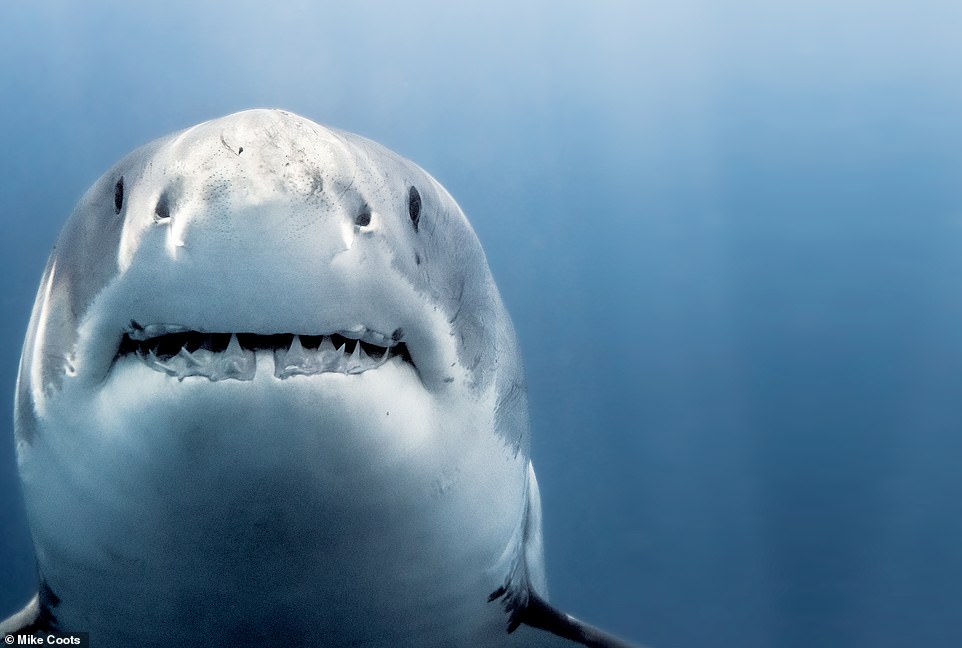
Coots has collected his beautiful shark photography in a new book, Shark: Portraits. Above is one of the images from the photo album, showing a great white shark called Buckethead off the coast of the Mexican island of Guadalupe.

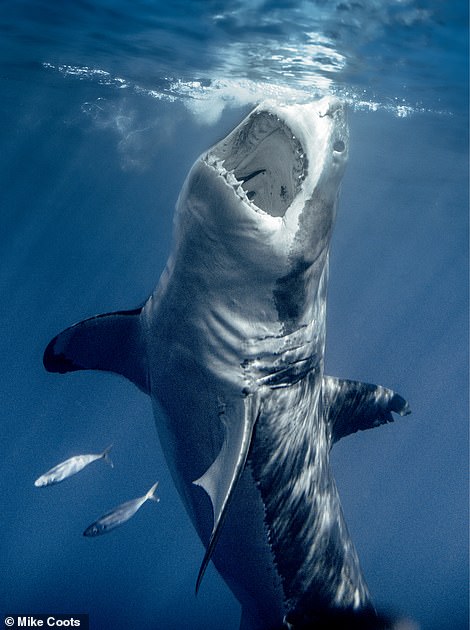
LEFT: In this powerful shot from Coots, a female tiger shark named Emily floats toward the camera at the Tiger Beach dive site in the Bahamas. RIGHT: Geoff Nuttall, named after the world-famous violinist of the St. Lawrence String Quartet, is a male great white shark. In this spectacular shot of Coots, he is seen in the waters near the Mexican island of Guadalupe
He studied photography in college and cut his teeth in the profession by photographing models and professional surfers. After graduating, he began to develop a passion for shark conservation.
A lightning bolt occurred when he was invited on a shark diving trip and brought along a camera. “After that, (sharks) became my favorite subject to photograph,” says Coots, adding that sharks are “beautiful, mysterious, technically difficult as subjects and a lot of fun to photograph.”
Over the past twenty years, he has built a network with fellow conservationists, with whom he visits shark-inhabited dive sites everywhere from Mexico to New Zealand.

A female great hammerhead shark named Pocahontas (also known as Patches) is shown in this striking photo at the Tiger Beach dive site in the Bahamas
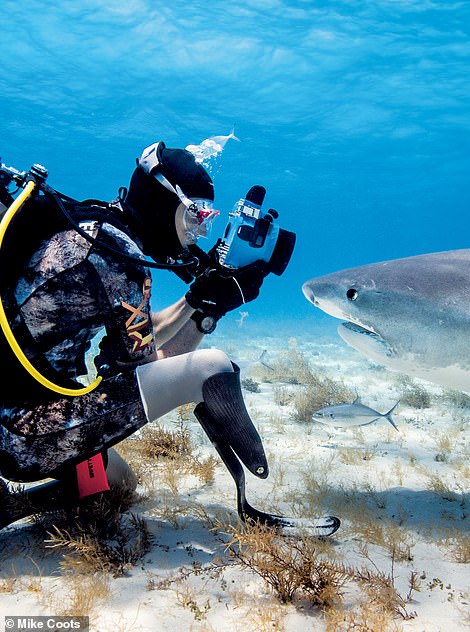

LEFT: Coots photograph a tiger shark at the Tiger Beach dive site in the Bahamas. RIGHT: A great white shark approaches the surface of the water off the coast of Motunui, also known as Edwards Island, in New Zealand
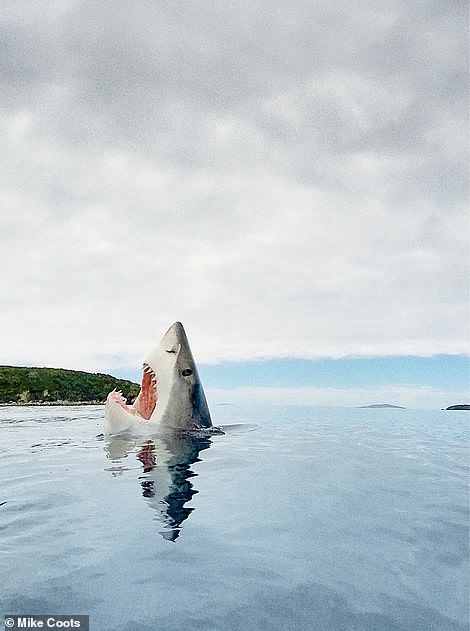
This beautiful shot shows a great white shark off Motunui, also known as Edwards Island, in New Zealand
But it’s not always easy to track down the creatures. The biggest challenge Coots faces is finding sharks to photograph. He says, “They’re not as common as people think, and for certain species you sometimes have to go to the edge of the Earth.”
In his career, Coots has documented everything from hammerhead sharks to tiger sharks. The largest creature he has ever shot is an adult female great white shark measuring 3.6 meters, he reveals.
He stands within inches of the sharks when he photographs them, whether he is freediving, scuba diving or in a shark cage.
Naturally, safety measures are taken when photographing underwater. Coots says: ‘The safest way to be underwater with sharks is to have good visibility and lots of eye contact with sharks. They are ambush predators and if they know you know they are there, it is much safer.”
Coots explains that they are more likely to attack if you are in “murky water” or “splashing and looking like a wounded animal.” He warns, “Don’t splash, panic, and when you’re underwater, always look at the shark and make sure you look big… don’t turn your back on a shark.”
Even inexperienced photographers can make mistakes when photographing the sharks, he reveals. Coots says, “They look too much through the camera viewfinder and are oblivious to what’s going on around them, especially if there are multiple sharks nearby.”
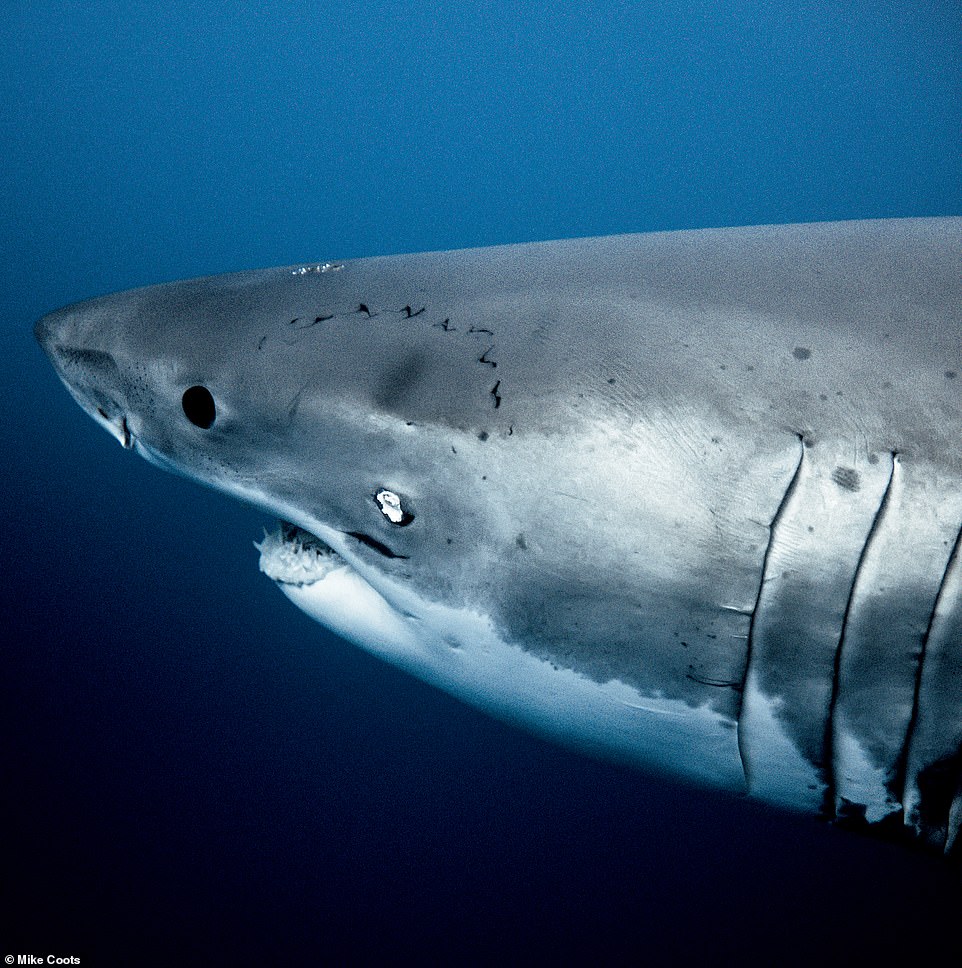
Johnny Rainbow, a male great white shark, is captured in this beautiful close-up shot from Mexico’s Guadalupe Island. Bite marks from another shark are visible on his head
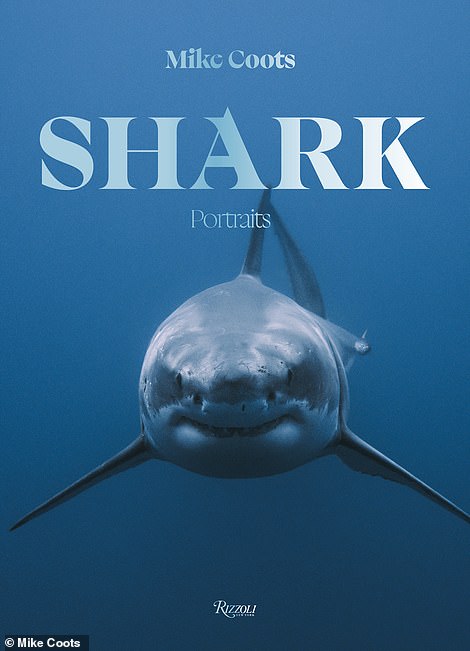
Shark: Portraits by Mike Coots, published by Rizzoli, is on sale now for £49 ($60). The cover image shows a great white shark off Guadalupe Island in Mexico
A chilling situation once enveloped Coots himself while he was underwater with a great white shark. He says: ‘He almost bit me, but I think he was just territorial and not hungry, otherwise he would have bit me if he wanted to. I had so much adrenaline and even a few hours later I had trouble talking.”
It’s important to know the warning signs when sharks are preparing to attack. Coots says, “They drop their pectoral fins, flex their bodies and swim erratically.”
But despite what some may think, sharks have no intention of preying on humans, Coots notes, explaining that the biggest misconception about these creatures is “that a shark wants to bite you as soon as you get in the water.” “That’s the furthest thing from the truth,” he admits.
Coots thinks people’s misplaced fear of sharks is largely a response to their representation in Hollywood – with films like the 1974 blockbuster Jaws – and the media. Their physical features also inspire fear, he notes, saying, “They’re also large, powerful and have sharp teeth… it almost looks like a dinosaur that isn’t extinct.”
The biggest positive about his work, he reveals, is that he shares “compelling, authentic images with those who love sharks, and shows a new side (of sharks) to those who are unfamiliar.” He hopes this new book will show how “sharks are misunderstood, beautiful as a subject and needed in our seas for a healthy planet.”
Shark: Portraits by Mike Coots, published by Rizzoliis on sale now for £49 ($60).
